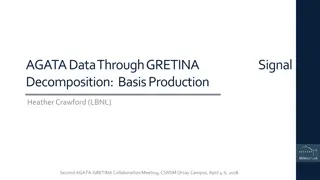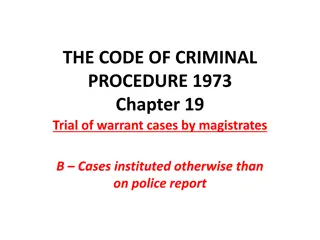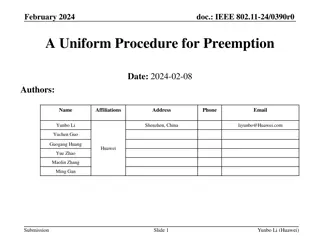Electrocardiography: Diagnosis, Procedure, and Significance
ECG, or electrocardiography, is a vital diagnostic tool for assessing heart rate, rhythm, axis, and various conditions like hypertrophies, ischemia, infarction, and arrhythmias. This procedure involves recording the heart's electrical activity on graph paper to provide crucial insights into the heart's health. Learn about the ECG procedure, its significance, and the key elements involved in interpreting an ECG reading.
Download Presentation

Please find below an Image/Link to download the presentation.
The content on the website is provided AS IS for your information and personal use only. It may not be sold, licensed, or shared on other websites without obtaining consent from the author.If you encounter any issues during the download, it is possible that the publisher has removed the file from their server.
You are allowed to download the files provided on this website for personal or commercial use, subject to the condition that they are used lawfully. All files are the property of their respective owners.
The content on the website is provided AS IS for your information and personal use only. It may not be sold, licensed, or shared on other websites without obtaining consent from the author.
E N D
Presentation Transcript
ECG Diagnosis and using Electro Cardio Graphy A.L. Maher Abdul Ameer Atiyah
DEFINITION ECG(electrocardiograph) ECG is define as " recording of electrical activity of heart on a graph paper. " Or Graphical representation of electrical activity of heart.
Overview of procedure GRIP Greet, rapport, introduce, identify, privacy, explain procedure, permission Lay patient down Expose chest, wrists, ankles Clean electrode sites May need to shave Apply electrodes Attach wires correctly Turn on machine Calibrate to 10mm/mV Rate at 25mm/s Record and print Label the tracing Name, DoB, hospital number, date and time, reason for recording Disconnect if adequate and remove electrodes
Significance of ECG ECG gives information about rate and rhythm of the heart. The physical orientation of heart i.e. axis, Its a diagnostic tool for various heart conditions like hypertrophies, ischemia, infarction , arrhythmias conduction problems and pace maker activity. ECG does not provide information about mechanical activity.
Electrophysiology - Pacemaker = Sinoatrial node - Impulse travels across atria - Reaches AV node - Transmitted along interventricular septum in Bundle of His - Bundle splits in two (right and left branches) - Purkinje fibers
ECG Paper This is long role of paper ,composed of small squares. One square is 1mm wide and 1 mm high. On ECG paper there are thick lines, between two thick lines (large square) there are 5 small squares. The speed of ECG machine is 25 mm per second.
ECG Paper The time internal of each small square can be calculated as 25 small sqrs are equal to 1 second. 1 small sqr is equal to 1/25 second i.e 0.04 seconds.
ECG Paper vertically the small square represent the amount of electrical potential. One small sqr represent the potential of 0.1 mv. 10 small squares represent the potential of 1 mv.
ECG Leads leads are electrodes which record the electrical potential of heart at different sites. There are 12 ECG leads : a) 3 bipolar limb leads. b) 3 augmented limb leads.(unipolar). c) 6 chest leads.
Leads and what they tell you Limb leads Limb leads look at the heart in the coronal plane aVL, I and II = lateral II, III and aVF = inferior aVR = right side of the heart
Leads and what they tell you Each lead can be thought of as looking at an area of myocardium Chest leads V1 to V6 look at the heart on the transverse plain V1 and V2 look at the anterior of the heart and R ventricle V3 and V4 = anterior and septal V5 and V6 = lateral and left ventricle
What do the components represent? PQRST = One EKG complex = One Cardiac Cycle Total Duration of a Cardiac Cycle = 0.8 seconds (20 small squares)
Wave Forms P wave = atrial depolarization QRS = ventricular depolarization T wave = ventricular repolarization Interpreting the ECG : 1. Calibration 2. Rhythm 3. Rate
1- calibration Check that your ECG is calibrated Height: - It should be 10mm (10 small squares ) tall. Paper speed : -25mm/s -25 mm (25 small squares / 5 large squares) equals one second
3-Rate There are two way: 1-If the heart rhythm regular HR= ________________________________ Nub. Large sqr. Between R and R 300 2-If the heart rhythm irregular - Number of R inside 30 large squares and multiply the number R by 10
P wave P wave shows atrial depolarization.. - Height P wave Height less than 0.08s(2 small squares) - Length P wave Length less than 0.12s(3 small squares) Presence of P waves in ECG strip shows the sinus rhythm.
Height -A tall P wave (over 2 small squares) can be called P pulmonale -Occurs due to R atrial hypertrophy -Causes include: - pulmonary hypertension - pulmonary stenosis - tricuspid stenosis Length P wave with a length >0.12 seconds (3 small squares) and a bifid shape is called P mitrale - It is caused by left atrial hypertrophy. Causes include: 1-Mitral valve disease 2-LVH
PR-interval -the PR interval is measured between the start of the P wave to the start of the QRS start. -A normal PR interval is between 0.12 to 0.20 seconds ( 3 -5 small squares).
QRS complex The width of the QRS complex should be less than 0.12 seconds (3 small squares)
The ST segment Normal ST segment should sit on the isoelectric line Planar ST elevation can represent an MI Planar ST depression can represent ischemia
- causes of elevation include acute MI (e.g. anterior, inferior), left normal variants (e.g. athletic heart, Edeiken pattern, high-take off), acute pericarditis bundle branch block, - causes ischemia, digoxin effect, ventricular hypertrophy, acute posterior MI, pulmonary embolus, left bundle branch block of depression include myocardial
T wave - No definite rule for height T wave - generally shouldn't be taller than half the size of the preceding QRS -If the T wave is more taller than half the size of preceding QRS it may indicate Hyperkalemia -If the T wave is flat, it may indicate Hypokalemia -If the T wave is inverted it may indicate ischemia
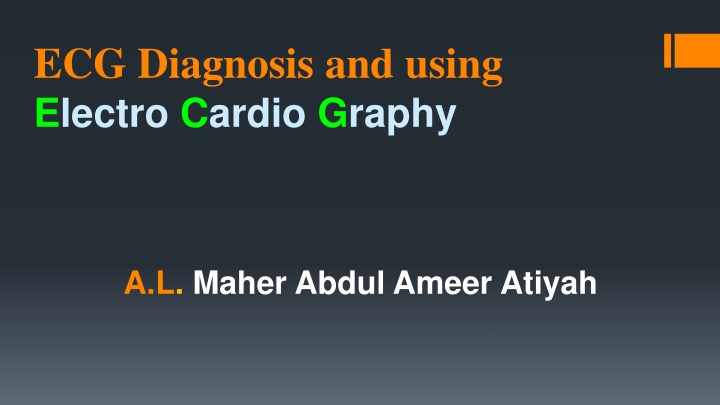






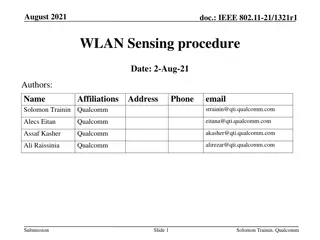

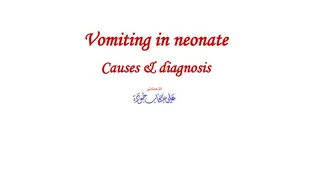

![Briefing on the Criminal Procedure Amendment Bill [B12-2021] to the Portfolio Committee on Justice and Correctional Services](/thumb/157093/briefing-on-the-criminal-procedure-amendment-bill-b12-2021-to-the-portfolio-committee-on-justice-and-correctional-services.jpg)





